Why Do People Continue to Tell Stories About Fairies
For as long as we have been able to stand upright and speak, we have told stories. They explained the mysteries of the world: birth, death, the seasons, day and night. They were the origins of human creativity, expressed in words but also in pictures, as evidenced by the cave paintings of Chauvet (France) and Maros (Indonesia). On the walls of these caves, the paintings, which date back to around 30-40,000 BC, tell us myths or sacred narratives of the spirits of the land, the fauna of the regions, and humankind's relationship to them.
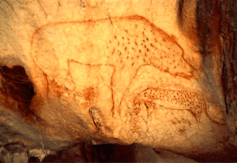
As humanity progressed, other types of stories developed. These were not concerned with the mysteries of the meaning of life but with everyday, domestic matters. While they were more mundane in the issues they explored, such tales were no less spectacular in their creativity and inclusion of the supernatural.
These smaller, everyday stories, combining the world of humans with fantastical creatures and seemingly impossible plots are now classified as fairy tales or folk tales. Such tales, originating in pre-literate societies and told by the folk (or the average person), capture the hopes and dreams of humanity. They convey messages of overcoming adversity, rising from rags to riches, and the benefits of courage.
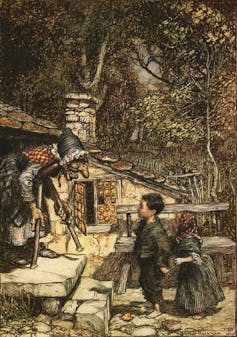
Fairy tales are also extremely moral in their demarcation between good and evil, right and wrong. Their justice references the ancient tradition of an eye for an eye, and their punishments are ruthless and complete. Originally for adults (sometimes for children), fairy tales can be brutal, violent, sexual and laden with taboo. When the earliest recorded versions were made by collectors such as the Brothers Grimm, the adult content was maintained. But as time progressed and Christian morality intervened, the tales became diluted, child-friendly and more benign.
Despite these changes, it is apparent that fairy tales are still needed today, even for grown-ups. In an uncanny, sometimes inexplicable way, we consciously and unconsciously continue to tell them, despite advances in logic, science and technology. It's as if there is something ingrained in us – something we cannot suppress – that compels us to interpret the world around us through the lens of such tales. And if we are not the tellers, we are the greedy consumers.
'Fairy tale' princesses and 'wicked witches'
The 20th anniversary of the death of Diana, Princess of Wales, for example, has been cast – like her life – as a fairy tale. Throughout the year, she has been commemorated in articles with headings such as "a troubled fairy tale", "beyond a fairy tale", and "just another fairy tale". While these articles have endeavoured to deconstruct the familiar narrative, they have not been entirely successful.
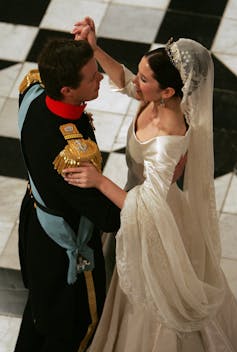
The notion of a fairy tale princess has also characterised the coverage of Princess Mary of Denmark and Duchess Catherine of Cambridge. Even after 13 years of marriage, our own "Aussie princess" is described as living a fairy tale, evident in 2017 media stories with titles such as "Princess Mary and Prince Frederik's fairy tale royal romance". Likewise, Kate, once a commoner, now a princess, has featured in articles titled "Prince William and Duchess Kate's fairy-tale love story" and "Kate's Most Royal Fairy Tale Gown (To Date)". As the titles of some of these stories show, they also feature the mandatory prince charming (William), or the prince who is revealed to be not-so-charming after all (Charles). Others extend the fairy tale formula to include wicked stepmothers (Di's real life stepmother) and wicked witches (Camilla).
Is such recourse to fairy tales merely a media stunt to sell stories packaged in an easily consumable, gossip-laden snack box? Or do these articles reflect that deep-seated compulsion of ours to tell and, in turn, to listen to stories? The answers are "yes" and "yes". But let's forget the media's role and look at the more interesting latter point.
Many fairy tales began thousands of years ago, the age depending on the tale itself. Beauty and the Beast has its origins in the story of Cupid and Psyche from the Latin novel, The Golden Ass, from the second century AD.
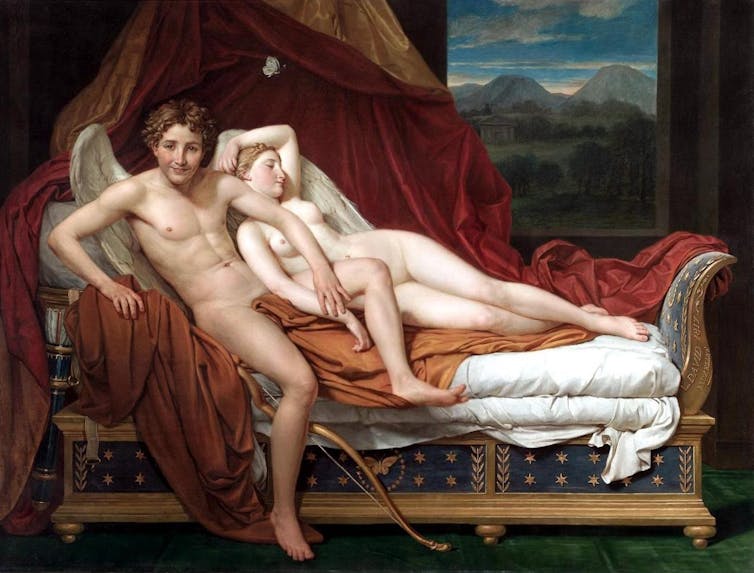
In this tale, the beautiful Psyche is visited at night by an invisible lover – hearing only a voice – whom she is led to believe is a monster. While recorded by the novelist, Apuleius, the story is almost certainly much older; perhaps having its origins in myth and ritual, and handed down by word of mouth.
The research of Dr Jamie Tehrani has unearthed an early date for Red Riding Hood, which he has traced back to at least 2,000 years; not originating in Asia, as once believed, but most likely in Europe. Other tales studied by Tehrani have been dated to as early as 6,000 years ago.
Fairy tales are excellent narratives with which to think through a range of human experiences: joy, disbelief, disappointment, fear, envy, disaster, greed, devastation, lust, and grief (just to name a few). They provide forms of expression to shed light not only on our own lives but on the lives beyond our own. And, contrary to the impression that fairy tales always end happily ever after, this is not the case - therein lies much of their power.
They helped our ancestors make sense of the unpredictability or randomness of life. They repeated familiar experiences of unfairness, misfortune, bad luck, and ill-treatment and sometimes showed us how courage, determination and ingenuity could be employed even by the most disempowered to change the course of events.
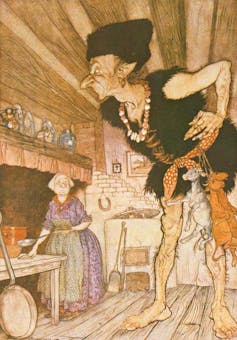
Jack and the Beanstalk, for example, tells how a chance encounter with a stranger (an old man who provides magic beans) can bring about terrible danger (meeting a giant) but also terrific good fortune (acquiring a hen that lays golden eggs). The tale also celebrates how a poor boy can make the most of an arbitrarily dangerous situation that could have gone either way - being eaten or becoming rich - through his bravery and his intellect.
Fairytales also celebrated unexpected good fortune and acts of kindness and heroism, thereby reinforcing – even restoring – our faith in humanity. As tales of the folk, they not only entertained, but reflected the turmoils and triumphs of the lower classes, and enabled them to fantasise about how the "other half" lived.
Cinderella and social criticism
But tales of kings, queens, princes and princesses - of which there are many - are not only a means of mental escape for the poor. They are also a means of social criticism.
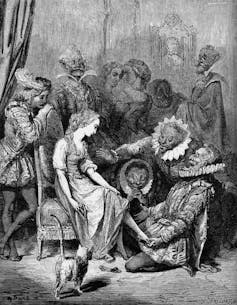
In Cinderella, as recorded by Charles Perrault, the two stepsisters may have every material possession imaginable, but their cruelty renders them grotesque. And, of course, the lowly Cinderella triumphs. In the German version, Aschenputtel, recorded by the Brothers Grimm, the fate of the stepsisters is very different. Whereas Perrault's version has the kindly Cinderella forgive them, the Grimms - clearly working from another tradition - describe how they have their eyes plucked out by pigeons!
Such stories of fantasising about a royal life and simultaneously despising it may have functioned as an emotional release similar to the ancient Greek experience of catharsis (the shedding of anxieties through watching outrageous tragedies and obscene comedies).
Taking the fascination with Diana's life as a fairy tale, for example, we still employ the cathartic release of the genre to interrogate her and, for those of us so inclined, to find some meaning in the Di phenomenon. From the romantic courtship, to the wedding of the century and that dress, to motherhood, glamour, betrayal, heartbreak, divorce, alienation and a new love cut short by an early death.
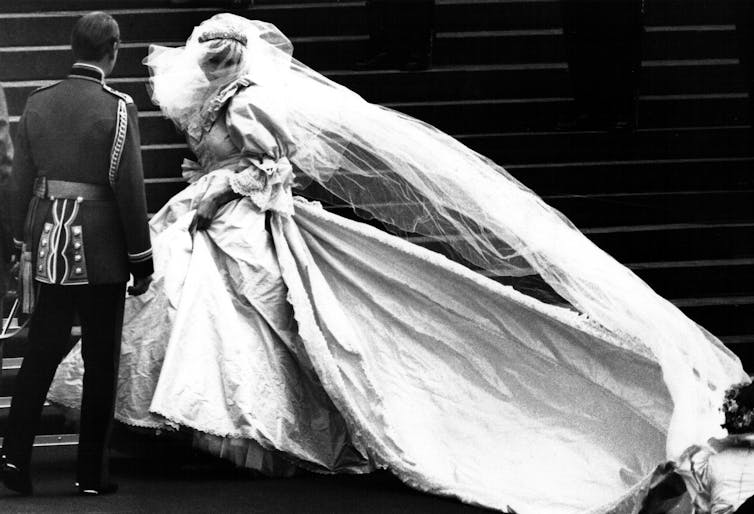
Some, of course, have criticised the warm, fuzzy emotionalism that has sprung from the fairy tale of Di's life. If it is not to your liking, there are more robust tales with powerful messages of resistance and resilience. In tales such as Hansel and Gretel and Donkeyskin, the young protagonists are persecuted and abused by predators.
There is much to complain about in these tales from a politically correct or feminist perspective. They are violent and subversive: Gretel pushes a witch into an oven and in Perrault's version of Donkeyskin, a king wishes to marry his daughter following the death of his wife. But they are more than narratives of abuse. They are also about courage and ingenuity on the part of the young survivors.
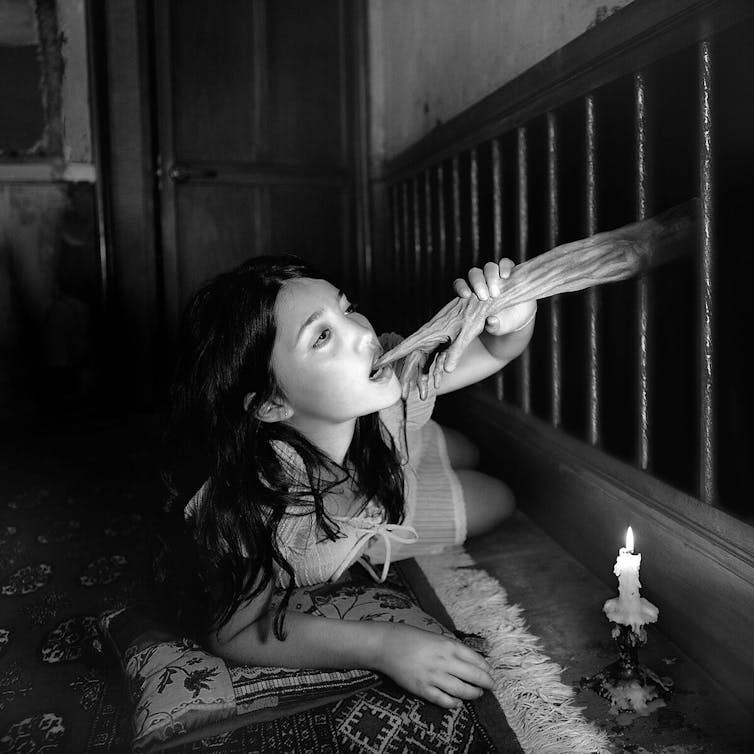
Donkeyskin, variants of which are extant in English (Catskin) and German (All-Kinds-Of-Fur), champions the bravery and inherent goodness of the young heroine who dresses in the skin of a donkey and leaves the palace in order to escape her father's desires. Her subsequent life as a servant, filthy, humiliated, reviled and renamed "Donkeyskin" by her fellow servants, never crushes her soul.
Within the fantasy and the convenient appearance of supernatural assistants or a romantic ending, both of which feature in Donkeyskin, these stories are powerful reminders that evil exists in the world in the form of human beings - but it is not definitive or unconquerable.
Contemporary reworkings
With the publication of the Grimms' Children's and Household Tales in 1812, artists and illustrators were the first interpreters of fairy tales. Visual responses have ranged from famous works by Gustave Doré, Arthur Rackham and Edmund Dulac to Maurice Sendak and Jan Pieńkowski.
More dissident responses have included the photographs of Dina Goldstein, whose Fallen Princesses series (2007-2009) is an astute response to the Disney princess phenomenon of unattainable, debilitating images of femininity and romance in bowdlerised versions of the original tales. Here, Goldstein critiques the superficiality of the princess stereotype, reminding us that it is as facile for children as the Diana fairy tale dream is for adults.
Before Goldstein, photographer Sarah Moon also challenged the dilution of fairy tales in the modern west through her provocative (sometimes banned) interpretation of Little Red Riding Hood. In this powerful rendition, Moon takes her child reader back to the original and raw meanings embedded in the tale through her exploration of the theme of the human predator in the symbolic guise of the wolf.
Moon's decision to return to the terror and drama of the Grimms' version is testimony to the need to challenge the dilution and contamination of the tales. Even the Grimms were guilty of adding and subtracting to the material, particularly when it came to the insertion of overt Christian morality. Equally if not more so, the Disneyfication of fairy tales has stripped them of the power and the pain to which Moon returns.
Writers and poets have also responded to the tales and, like Moon, have regularly sought to return them to their once formidable status. Women authors in particular have created powerful, sometimes heartbreaking – but always real and truthful – new versions.
Among the thousands of old tales in new clothes is the literature of second wave feminists, including the suite entitled Transformations (1971) by renegade poet Anne Sexton, who takes the domesticity of the original tales and mocks, ridicules, cherishes and – literally – transforms them. Angela Carter's The Bloody Chamber (1979), a magnificent collection of retellings of famous fairy tales, is full of female empowerment, sensuality and violence in a tour de force that both reinstates the potency of the stories and re-imagines them.
Novelist, poet and essayist, Margaret Atwood also transforms the originals. Her response to The Girl Without Hands, which tells the story of a young woman who agrees to sacrifice her hands in order to save her father from the devil, in a poem of the same name is a profound meditation on the continuation of both abuse and survival.
The fairy tales first preserved by collectors such as the Brothers Grimm - retold, bastardised, edited, annotated, banned and reclaimed - belong ultimately to the folk who first told them. And the folk continue to tell and retell them. Closer to home than the Black Forest, a new show at the The Ian Potter Museum of Art contains work by international and Australian artists, including Tracy Moffatt and Sally Smart. The show returns - once again - to fairy tales to express social concerns and anxieties surrounding issues such as the abuse of power, injustice and exploitation.
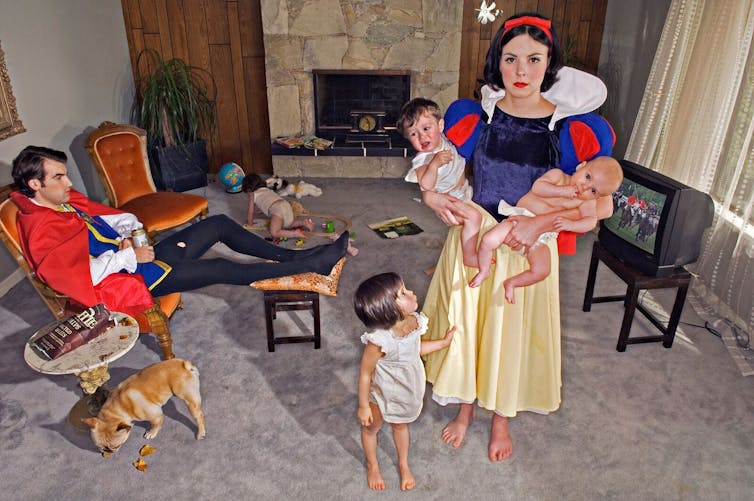
Fairy tales are, indeed, good to think with, and their retellings shed light on cultural, societal and artistic movements. Both children and adults should read more fairy tales – both the original and the transformed versions, for they are one of our cultural touchstones.
All the better to see you with: Fairy tales transformed, is on from Thursday 23 Nov 2017 to Sunday 4 Mar 2018 at The Ian Potter Museum of Art, The University of Melbourne.
Source: https://theconversation.com/friday-essay-why-grown-ups-still-need-fairy-tales-87078
0 Response to "Why Do People Continue to Tell Stories About Fairies"
Postar um comentário